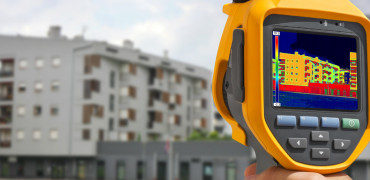In March 2014 the European Parliament passed regulation on the use of fluorinated greenhouse gases (F-Gases). The F-Gas Regulation was a landmark ruling that has affected manufacturers, installers, specifiers, owners and users of air conditioning equipment along with those in other refrigeration related sectors.
If you deal with refrigerant, an understanding of this legislation is crucial to understanding changes affecting your industry over the next 10 years. It’s also key that you inform your customers of the steps they need to follow in order to comply and future proof their buildings and businesses.
Here are the 18 things you need to know about F-Gas Regulations NOW.
The 18 things you need to know about F-Gas
-
F-Gases include hydroflourocarbons (HFCs), perfluorocarbons (PFCs) and suphur hexafluoride (SF6)
-
F-Gases are man-made gases and powerful greenhouse gases with a global warming effect of up to 23,000 greater than Carbon Dioxide
-
75% of F-Gases are used in refrigeration, air conditioning, heating and other transfer fluids
-
The aim of the phase down of F-Gases is to combat global warming and climate change
-
The effect of F-Gases included in the phase-down are measured based on their Global Warming Potential (GWP)
-
Global Warming Potential (GWP) is a relative measure of how much heat a greenhouse gas traps in the atmosphere in comparison to a similar mass of Carbon Dioxide
-
The F-Gas Regulations are measures to reduce F-Gas and prevent harmful leakage into the atmosphere
-
This leakage can occur during the manufacturing, operation and disposal of products
-
The ultimate objective of the F-Gas Regulations is to cut the availability of HFCs by 79% between 2015 and 2030
-
From the 1st January 2015 the revised F-Gas regulations also mean extra measures will also have to be taken on board to contain the gas e.g. leak checks and regular record keeping
-
HFC bans will be enforced in new equipment for certain sectors
-
There will also be a servicing ban on HFCs with a GWP >2500 for certain sectors
-
Training and certification will be required to comply in certain sectors
-
The F-Gas Regulations cover a number of products used in refrigeration and building services such as air conditioning
-
Many manufacturers in these affected sectors will be looking at designing more efficient systems to deal with lower refrigerant volumes or alternative low GWP refrigerants like R32
-
The phase down will restrict the availability of HFCs through a quota system policed by the Environment Agency in the UK
-
Only companies with EU quotas will be able to supply HFCs to the EU market
-
The first major drop in market availability is between 2017 and 2018 (the drop will be 30%), so air conditioning contractors and users will already be feeling the strain and should continue to be prepared
There is still time to plan for future milestones in the F-Gas Regulations but as the market sees the price in R410A F-Gas refrigerants increase by up to 600% (likely 700% by March 2018) the time to make serious changes is now.
Over the next few weeks I will be posting an article on R32 refrigerant to please check back regularly.
For more information on the F-Gas phase down, including the HFC EU limits, please see our infographic here or download our Working with F-Gas Regulations CPD Guide here.
Download our free F-Gas CPD Guide
Deane Flint is Joint Managing Director - Joint Divisional Manager for Mitsubishi Electric.


